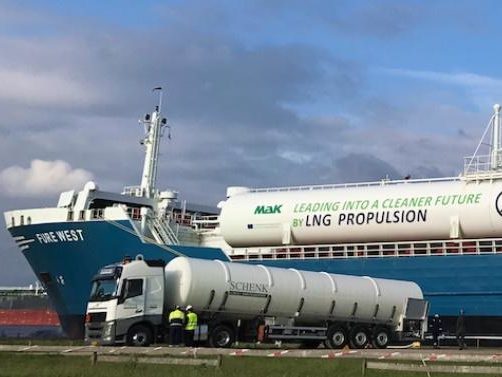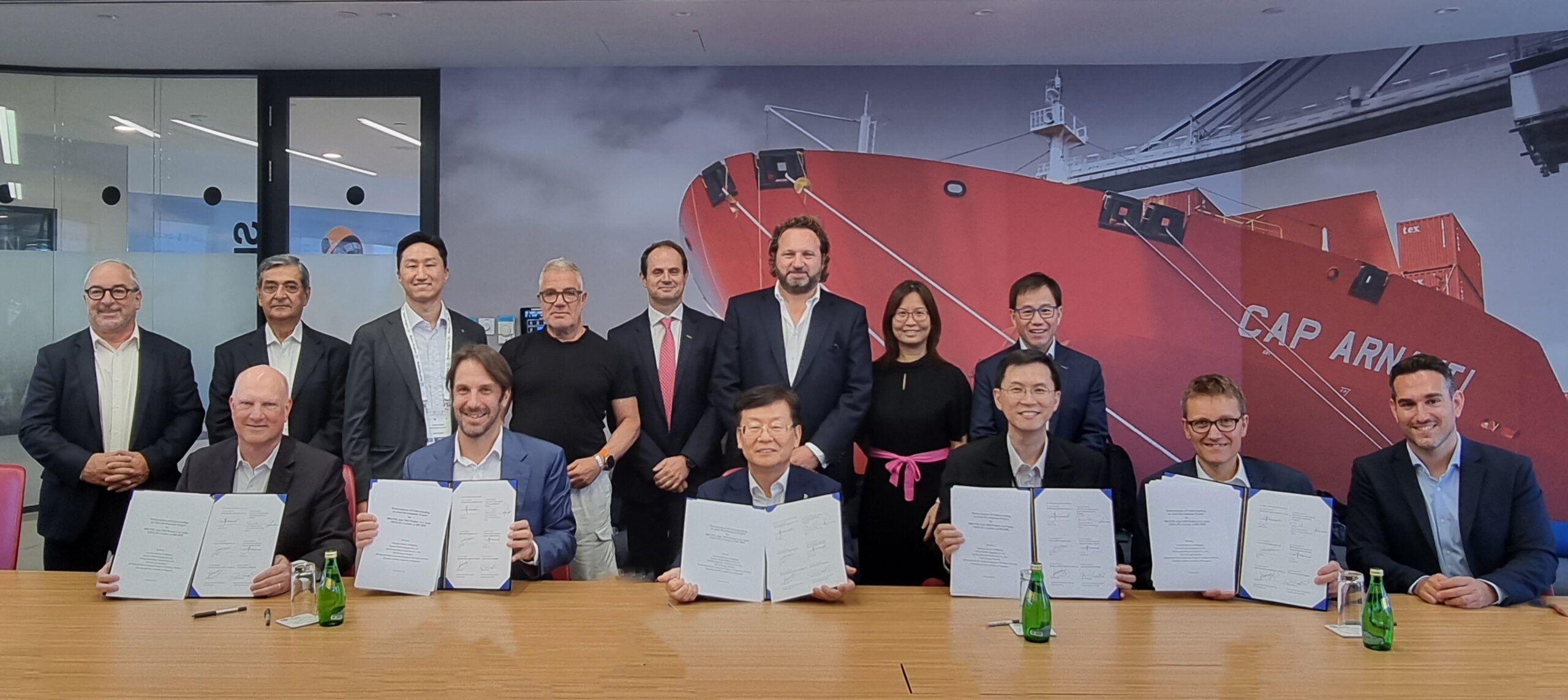A respected scientist has challenged the greenhouse gas (GHG) emission reductions achievable by using LNG as a marine fuel. The challenge focuses on claims made in a recent report commissioned by lobby group SEA\LNG and the Society for Gas as a Marine Fuel (SGMF).
In the original study, consultant Thinkstep concluded that LNG can reduce GHG emissions from shipping by up to 21% on a well-to-wake basis (counting all emissions from gas production through to use on vessels) compared to using heavy fuel oil (HFO).
But Dr Elizabeth Lindstad, chief scientist at Norwegian research institute SINTEF Ocean, argues that the Thinkstep study uses three faulty assumptions: well-to-wake emissions for heavy fuel oil (HFO) which are too high given modern refining efficiency; unaccountable differences in the thermal efficiencies of engines burning HFO and LNG; and unburned methane figures taken from an engine load range that does not reflect the reality of today’s ship operations.
“The results from my own calculations indicate that the only LNG option which contributes to reducing GHG emissions, is the two–stroke, high-pressure engine,” Dr Lindstad concluded. “For all other options, GHG emissions increase or are equal to using MGO or HFO.”
The two parties are now in dialogue. SEA\LNG general manager Steve Esau told Fathom World that the consortium would be responding to Dr Lindstad’s analysis in due course. He described the peer-reviewed study as the definitive investigation of GHG emissions from currently available engines, assessing the supply and use of LNG according to ISO standards.
Recognised issue
“Methane slip is a recognised issue for low pressure engines and factored into the GHG emissions analysis,” said Mr Esau. “There are clear technology pathways to decrease methane slip and these are being pursued aggressively by engine manufacturers. Methane slip represents inefficiency, so engine manufacturers are strongly incentivised to reduce it.”
The challenge to the study underlines the importance of controlling and regulating methane slip to ensure that LNG as a marine fuel can deliver GHG emission reductions. IMO has yet to clearly define a stance on methane emissions, targeting CO2 emissions only in its existing GHG measures. But methane slip is on the agenda as the body considers how to develop its GHG reduction strategy by 2023.
Moves to limit methane emissions have already been taken in China. A regulation issued by the Ministry of Environmental Protection, in force since 1 July 2018, limits methane emission for domestic vessels to 1.5-2.0 g/kWh. That is already a challenge for the four-stroke engines covered by the regulation, which will become even more stringent next year: the limit for smaller engines (with a cylinder displacement of up to five litres) will become 1.0 g/kWh instead of 1.5 g/kWh from 1 July 2020.
As regulations emerge, technical solutions to the methane slip problem are desperately needed. The issue is of greatest concern to four-stroke dual-fuel engine makers. Most four-stroke engines burning LNG use low-pressure gas admission, which leads to more unburned methane than high-pressure injection technologies.
Potential solutions
Two potential solutions are being explored. One is to create four-stroke engines using high-pressure injection instead. German engine maker MTU has already published a paper detailing its initial development of a high-pressure injection concept, and fuel injection specialist Woodward is developing a gas injector that would work in such engines.
But a new engine type would not help operators who have already deployed gas-burning four strokes. Another solution, using a catalyst to oxidise and capture methane before it escapes into the atmosphere, could be retrofitted. But at present methane oxidation is not ready for use with marine engines, explains Joseph McCarney of UK chemical and sustainable technology company Johnson Matthey.
“There are problems such as the decay in catalytic activity over time, due to a susceptibility to inhibition by other exhaust gas components such as water and sulphur,” says Mr McCarney. “Currently these problems cannot be resolved with a ‘fit and forget’ solution but require an approach that considers the engine and the emission control technology as interdependent components.”
One of the key challenges for methane oxidation is the high exhaust temperature needed. As a result, the location of the catalyst is critical, with pre-turbocharger installations more effective. Other experimental catalyst technologies try to raise the energy in the exhaust gas by less conventional means, including plasma reactors. Such complexity would prove a challenge in marine operations.
For larger engines, emissions of unburned methane are less challenging. High-pressure gas injection two-stroke engines already feature very low emissions due to the almost complete combustion of methane using the Diesel cycle. For engines featuring low-pressure fuel gas admission, such as Winterthur Gas & Diesel’s (WinGD) X-DF range, methane emissions are higher, although not as high as that of smaller engines.
According to WinGD senior adviser German Weisser, the methane emissions of the X-DF range could be reduced substantially in the future. In a paper presented at CIMAC World Congress in June, he reported that the company is exploring technologies with the potential of reducing methane emissions.
“Recent tests of one particular technology option on a lab engine indicate potential for methane emissions reduction of 50% or more,” he reported.
































